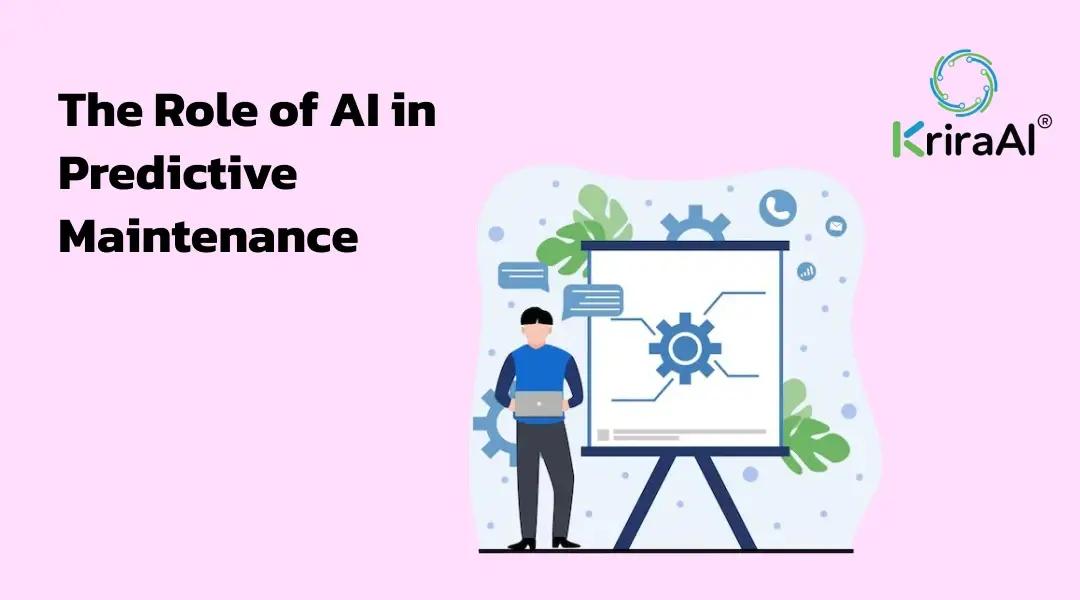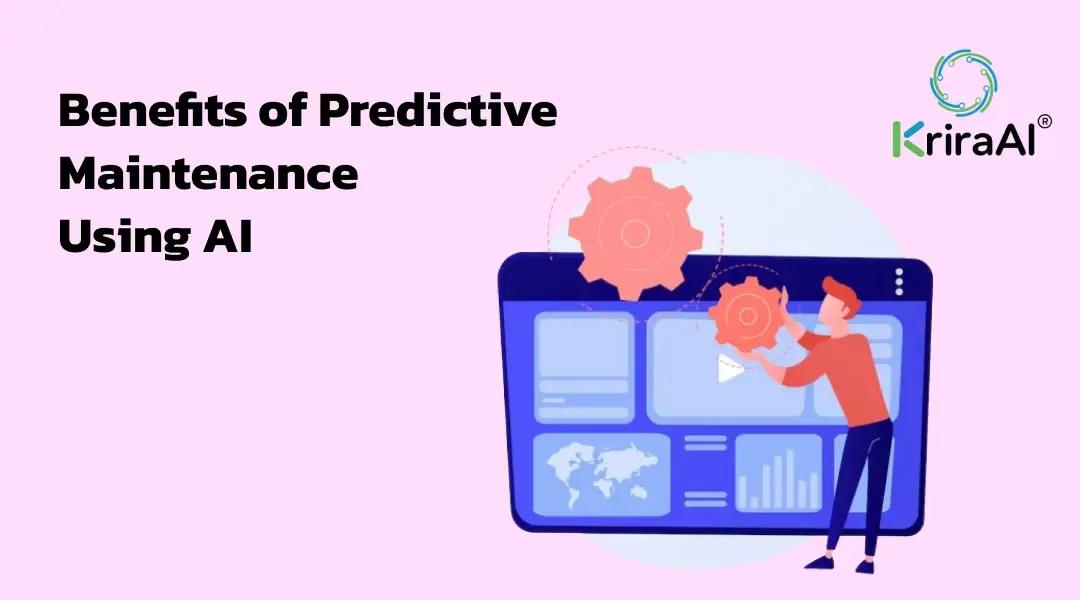How AI Development Is Driving Predictive Maintenance in Factories
You’re running a production line that can’t afford to stop. Every hour of downtime costs you thousands—or more. You’re doing scheduled maintenance, sure, but somehow machines still break. Always at the worst time. Sound familiar?
Predictive maintenance flips that script.
Instead of reacting to breakdowns or over-maintaining healthy equipment, predictive maintenance uses real-time data to predict failures before they happen. That means fewer shutdowns, lower costs, and a whole lot fewer headaches.
But here’s the catch: to make predictive maintenance actually work, you need more than just sensors and dashboards.
You need AI development—tailored to your factory.
The Role of AI in Predictive Maintenance

Let’s get real for a second. “AI in manufacturing” sounds sexy. But under the hood, it’s math. Pattern recognition. Noise filtering. Behavior modeling.
At KriraAI, we build machine learning systems that analyze vibration, temperature, sound, and pressure data from factory equipment. These models learn to spot the early warning signs of wear and tear—long before a human technician would notice anything wrong.
Imagine getting a quiet alert: “Gearbox #6 is likely to fail in 9 days. Replace the bearing now.”
That’s not magic. It’s AI development—fed by your factory’s own data.
Even better, the more data it gets, the smarter it gets. The model learns your specific machinery, your environment, your usage patterns. That’s when AI starts to feel like an industrial engineer with a sixth sense.
Core Technologies Behind AI-Driven Maintenance
You don’t need a PhD to understand this stack, but you do need a partner who’s not just selling smoke.
Here’s what actually makes it work:
ML Algorithms – Supervised, unsupervised, and sometimes reinforcement learning models detect anomalies and forecast failures.
IoT Sensors – These are your data collectors. They feed real-time information from motors, pumps, valves, etc.
Digital Twins – A virtual mirror of your equipment that simulates its future health under various scenarios.
Computer Vision – Yep, cameras too. Useful for detecting leaks, misalignments, or overheating based on visual cues.
Data Lakes – Your historical logs matter. We build centralized repositories to train and retrain models over time.
Put simply: AI development for factories is less about robots, and more about building a smarter nervous system for your machines.
Real-World Use Cases in Factories
Let me show you where this gets exciting.
Automotive Manufacturer (Pune):
Implemented AI-driven maintenance on robotic arms. Result? 18% drop in unplanned stoppages within 6 months.
Electronics Plant (Malaysia):
Used AI for temperature and vibration analytics on SMT lines. Identified airflow inefficiencies no human noticed. Increased throughput by 12%.
Chemical Factory (Gujarat):
Introduced condition-based monitoring using AI models trained on valve pressure fluctuations. Prevented a catastrophic failure that would’ve cost $200K in downtime.
These aren’t pilot projects. They’re working systems. In real factories. With real ROI.
Benefits of Predictive Maintenance Using AI

Let’s stop being vague. Here's what AI predictive maintenance actually delivers:
Reduced Downtime: You fix problems before they spiral. That means lines stay running.
Lower Maintenance Costs: Why replace parts on a schedule if they’re still in great shape?
Longer Equipment Lifespan: Gentle on gear, smart with scheduling.
Data-Driven Decisions: Maintenance no longer runs on gut feel—it runs on evidence.
Fewer Human Errors: AI flags issues that even seasoned technicians might miss.
Smart factory AI isn't about replacing people. It’s about giving them superpowers.
Challenges in Implementing AI for Predictive Maintenance
Alright, here’s the honesty you won’t get in a sales deck.
Data Quality is a Beast. Messy, inconsistent, or missing data? Your AI’s only as good as what you feed it.
Legacy Systems Don’t Play Nice. We’ve had to integrate AI with machines built in the 1980s. Doable, but messy.
The Skills Gap is Real. Most factory teams aren’t staffed with data scientists. That’s why we build dashboards that talk to humans.
Trust Takes Time. Technicians don’t blindly follow an algorithm’s advice. And they shouldn’t. It takes a few early wins for the system to earn their confidence.
The solution? Start small. Show impact. Scale up.
How to Start: Building AI Predictive Maintenance Solutions
Here’s the step-by-step I follow with every client:
Audit What You Have: Sensors? Logs? Maintenance records? We map it all.
Define the Right Metrics: What does failure look like? What’s your definition of downtime?
Collect & Clean Data: Historical + live data becomes our training ground.
Model Development: We don’t just slap a model on. We build what fits your environment.
Pilot on Critical Equipment: Quick wins matter. Pick machines with known issues and visible ROI.
Integration & UX: The AI has to be usable—alerts, dashboards, mobile updates. All customized.
Monitor & Retrain: The factory evolves. So does the model.
Future Trends in AI for Factory Maintenance
Let me throw a few curves.
Edge AI: Models run on the equipment. Instant insights, zero lag.
Self-Healing Systems: Equipment that auto-adjusts based on AI input? Already in the works.
AI Copilots for Operators: Think ChatGPT for your plant floor. Ask, “What’s the vibration trend on Line 3?” and get an instant, contextual answer.
The factory of the future isn’t just smart. It’s predictive, proactive, and personalized.
Conclusion
AI development for factories isn’t hype. It’s not tomorrow’s dream. It’s today’s reality—if you know how to build it right.
And that’s what we do at KriraAI. Not just AI for the sake of AI. But AI that’s shaped by your machines, your pain points, and your goals.
Because when predictive maintenance actually works, it doesn’t just save money.
It changes how you think about running a factory.
FAQs
You don’t need years of history—but at least a few months of sensor data (vibration, temperature, etc.) gives a solid baseline.
Yes. We often retrofit analog equipment with external IoT sensors. The AI doesn’t care how old the machine is—it just needs data.
Not at all. In fact, mid-sized plants often see the fastest ROI because they’re more flexible and can scale fast.
Trying to do too much too soon. Always start small—one machine, one problem, one win
We build connectors or APIs that bridge our models with your current SCADA, ERP, or MES systems—no need to rip and replace.

CEO
